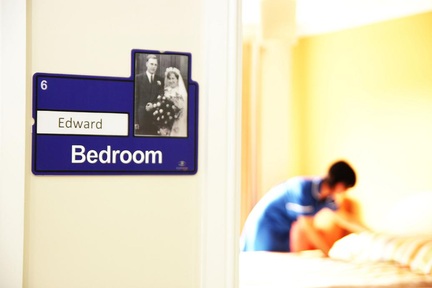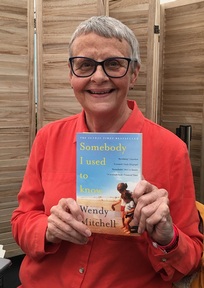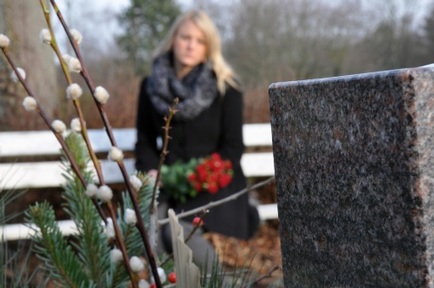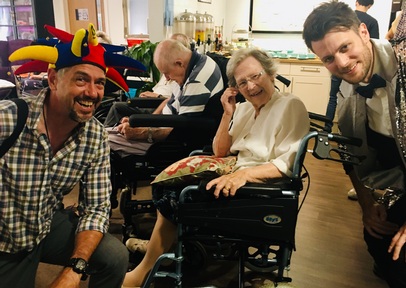Quality signage enhances the independence and mental agility of adults with memory loss
Tailoring an interior that suits the challenges adults with dementia face on a daily basis is a task for which there is an increasing range of in-depth studies and academic expertise available.
Stirling University and the Dementia Care Matters programme, in particular, have been at the forefront of pioneering research that has allowed providers to understand more about how interior surroundings can affect the mental well-being of adults with memory loss, including their ability to interpret direction.
Reminiscence training

Penny Howard, of Excelcare, believes that care providers are wasting their own potential if they overlook this type of expertise and fail to include a focus on reminiscence within training programmes.
On the group’s own methods, she comments: “We used up to date research, particularly with Dementia Care Matters and work undertaken by other Universities. Initially 50 staff completed the Diploma in Dementia Care and this training continues. In addition to the Diploma all staff receive training in Dementia Care and specifically our approach. If staff are not trained to use reminiscence, or understand why it is useful, it doesn’t matter how good the environment the benefits will be limited.”
When asked if staff have noticed a major difference in the behaviour of residents as a result, she says, “Yes we have. We rarely hear people shouting out and crying. The atmosphere is calm, friendly and busy. We have also seen staff benefit from working in a less stressful environment.”
Ms Howard believes that aiding reminiscence is important for all adults with dementia, but stresses that “the reminiscence needs to be personalised for the individual and we need to ensure it is associated with an appropriate decade. For example the 1950s and 60s are more appropriate now rather than the 1940s. You can walk in our homes and hear The Beatles or Frank Sinatra singing rather than songs from the First World War.”
Bespoke signage
Specialist signage provider, , has experienced a growing demand for more variety from care providers.
Sales director, Adrian Berry, comments: “We have found that customers often have something specific in mind when it comes to signage in their business or homes. Our bespoke design division work with the architects, marketing departments or other stakeholders to develop a bespoke signage solution which is then tailored to the customer’s interior design, brand and most importantly their residents’ needs.
“As we use the latest digital processes to produce Eyeway Signs it allows us to offer precise colour matching, inclusion of a brand logo, type of corporate font and the signs can even feature bespoke imagery.”

The company’s own Perception range has been tailored to this very effect, in response to care home groups that were struggling to find appropriate signage that would help residents better negotiate their way around an interior.
Mr Berry continues: “Perception signs feature bright bold colours, clear pictures with options to add tactile detail. Tactile helps improve clarity and ease of use which is increasingly important to people living with dementia. Our approved Braille licence allows us to include Braille legends to our signage including our bespoke ranges.
“We only use high quality non reflective and UV stable acrylic for our signs which are long lasting and easy to wipe clean. Our bestselling sign is the bedroom sign, which has inserts for a picture of the resident and an insert for their name.
“Reminiscence era imagery can be a very useful aid in way-finding for people living with dementia, our signs allow care homes to insert a picture of the resident from their youth to help them identify which room is theirs when partnered with a bold contrast colour and a clear readable font for their names.”
Site Audits
Making sure that each interior is judged by its own merits is crucial to the success of getting dementia signage right, something that Excelcare Holdings have looked to ensure.

Penny Howard says, “Each home developed their own dementia action plan so the service meets the needs of the people who live there; not those of a ‘one size fits all’ strategy. The environment of each service is different and is reflective of the people living and working there and also the building.”
Conscious of the need for on-site knowledge, Eyeway Signs believe free site audits to be an essential element of their approach.
Adrian Berry comments, “Good signage helps towards maximising a person’s independence, well-being, relieving stress and anxiety. By offering site audits we have helped homes nationwide order the right signs for the right locations. Because we use digital processing when we manufacture Eyeway Signs there are no tooling costs passed onto our customers so we can produce orders from one sign to over a thousand signs, perfect for the smaller care home to the larger groups.
He continues, “Care homes vary massively from layout, styles of doors to type of resident. Our signs can be supplied with or without drill holes for example, something which is important to note on all audits. We are able to add directional arrows to our signage collections to further aid way finding so ensuring the right sign has the right directional arrow is something which can be missed on a standard telephone order but easily identified on a site audit.”
Latest Features News
 25-Nov-19
2019 Election: Boris Johnson leaves social care in 'too difficult box' but Labour vows to end 'crisis'
25-Nov-19
2019 Election: Boris Johnson leaves social care in 'too difficult box' but Labour vows to end 'crisis'
 18-Oct-19
Podcast: Wendy Mitchell and dementia: 'My biggest fear is not knowing who my daughters are'
18-Oct-19
Podcast: Wendy Mitchell and dementia: 'My biggest fear is not knowing who my daughters are'
 27-Sep-19
Exclusive: Care minister backs care workers' call for time off to grieve and attend funerals
27-Sep-19
Exclusive: Care minister backs care workers' call for time off to grieve and attend funerals
 19-Sep-19
Podcast: Gyles Brandreth says poetry helps ward off dementia
19-Sep-19
Podcast: Gyles Brandreth says poetry helps ward off dementia
 30-Aug-19
Edinburgh Fringe funnyman joins comics facing toughest audience at care home gig
30-Aug-19
Edinburgh Fringe funnyman joins comics facing toughest audience at care home gig